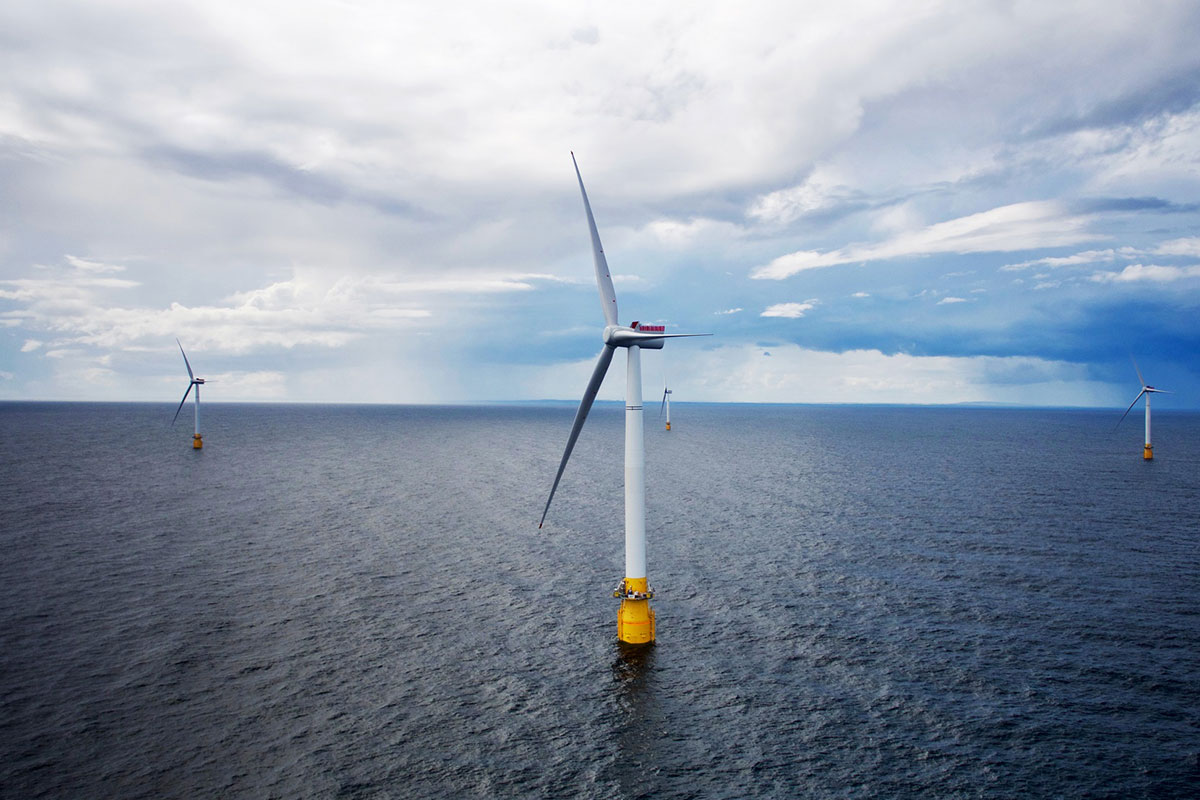Why floating technologies can revolutionize wind power in Italy (and beyond)

In Italy the development of offshore wind is hindered by the depth of the seabed. But floating technologies open up new possibilities. Not just for the wind
Out of over 10.5 gigawatts of wind capacity installed in Italy, the contribution of offshore plants – that is, located in the sea – is zero. Not even a megawatt. In the world, the offshore wind sector is still a niche but has grown a lot in recent years, especially in some countries of Northern Europe. Compared to the mainland, the sea offers the advantage of being able to install larger turbines – and even more powerful, for the amount of energy produced – while limiting the visual impact.
THE CONSTRAINTS TO OFFSHORE WIND POWER IN ITALY
In Italy, however, there are a number of constraints that limit the development of offshore wind. Landscape and environmental constraints (with related protests by the superintendencies), for example; or interference problems with shipping routes. Or, again, infrastructural and logistic difficulties due to the connections of the plants with the electricity grid.
But not only. The installation of offshore turbines in Italy is also complicated by meteorological and geological constraints. The windiness of the Mediterranean Sea is above all medium-low, lower than that of the North Sea. And then the seabed is deep, a feature that does not allow you to anchor the platforms. In Sicily and Sardinia the seabed drops over 30 meters already a short distance from the coast.
THE OBJECTIVES OF THE PNIEC
The Integrated National Energy and Climate Plan (PNIEC) – the Italian government document for the decarbonization of the energy system, focused on increasing the share of renewable sources – plans to bring offshore wind power to 900 MW by 2030.
ANEV, the National Wind Energy Association, estimates that around 950 MW are achievable, of which 375 could have been installed as early as 2020 if only the bureaucratic context had been different and simpler. As recalled by the president of the association, Simone Togni , the average time for the authorization of a wind farm in Italy exceeds five years.
According to ANEV, considering the various constraints, it is possible to install about 550 MW of offshore wind capacity between Abruzzo and Puglia and another 300 MW between Sardinia and Sicily "in the event that the constraint of proximity to the shores can be substantially reduced" .
THE POTENTIALS OF FLOATING TECHNOLOGIES
However, there are technologies that have "reopened the possibility" of a wider development of wind power in the Italian seas, Togni told Energia Oltre : floating technologies. Instead of installing plants with fixed foundations – which is difficult in the Mediterranean, given the high depth of the seabed – floating technologies allow the turbines to be placed on floating platforms. And therefore to exploit wind energy even in areas that cannot be used with traditional technologies.
ANEV is "pushing a lot" on technologies for floating wind power, Togni told Energia Oltre , "which are increasingly available and also national", Italian.
Last November, Il Sole 24 ORE reported on the Toto Holding group's MeDWos project for a floating offshore wind farm, 60 kilometers off the coast of Sicily, consisting of 190 turbines for a total capacity of 2.9 GW.
THE "FLOATING" PHOTOVOLTAIC
But floating can also be applied to sources other than wind, such as solar. The AGNES project by Saipem and QINT'X envisages the construction, off the coast of Ravenna, of an integrated marine district for renewable energy: offshore wind, floating photovoltaic and green hydrogen production.
HOW TO MAKE WIND FAN BETTER AND MORE IN ITALY. REPORT ANEV
This is a machine translation from Italian language of a post published on Start Magazine at the URL https://www.startmag.it/energia/eolico-offshore-galleggiante-italia/ on Sat, 27 Mar 2021 07:00:11 +0000.
